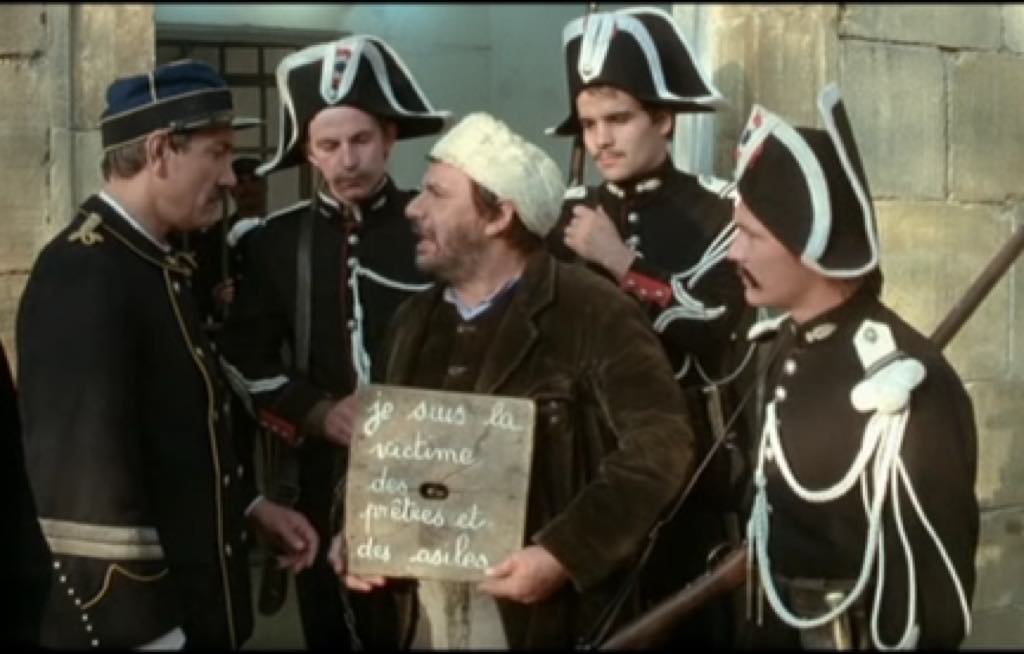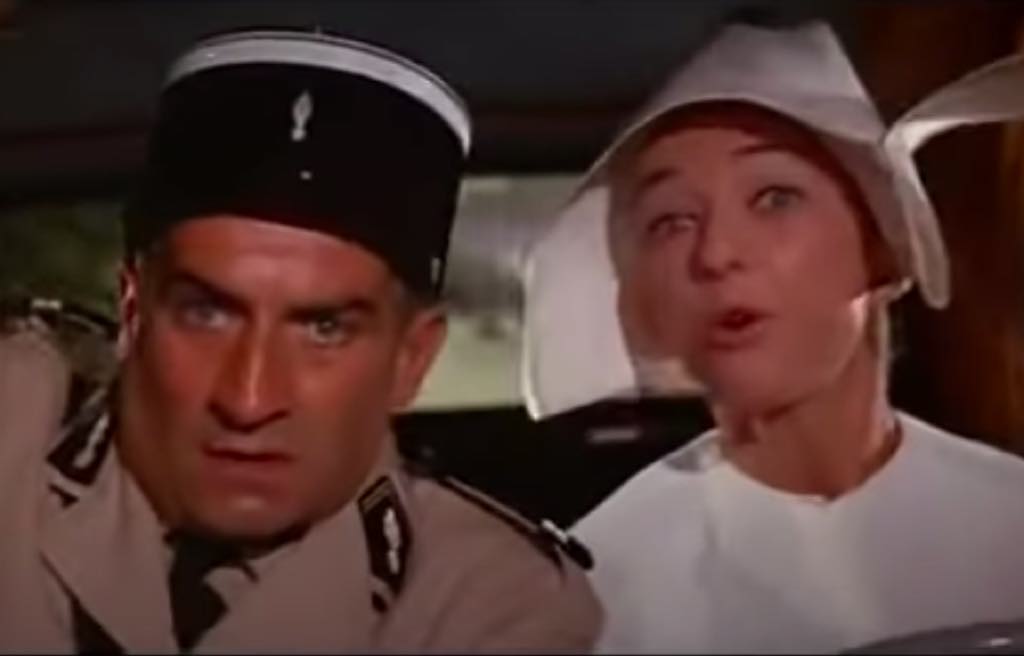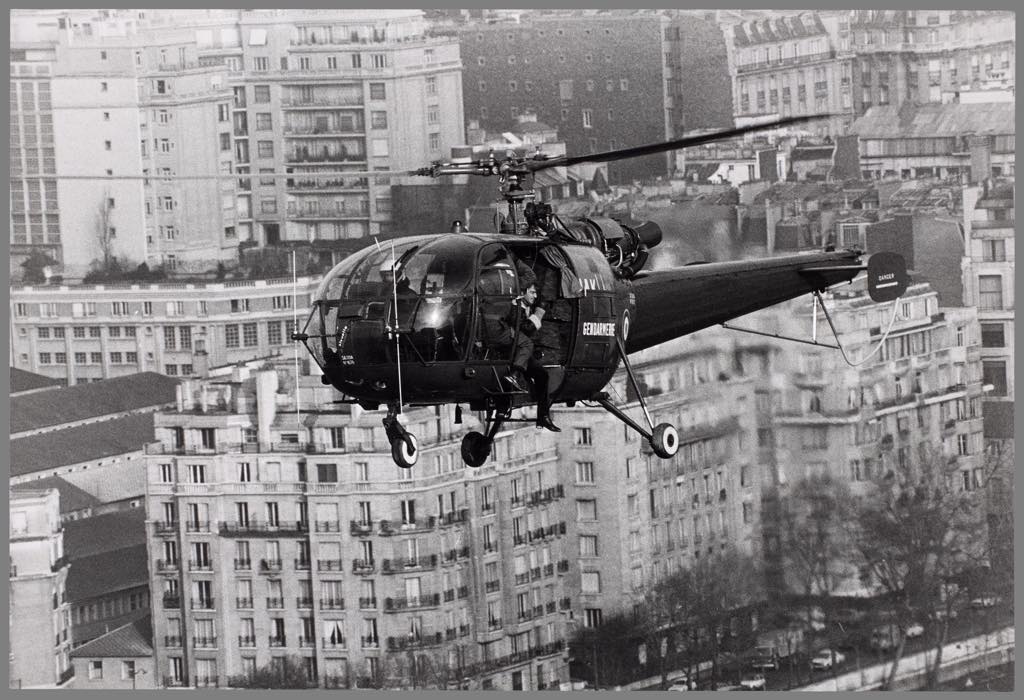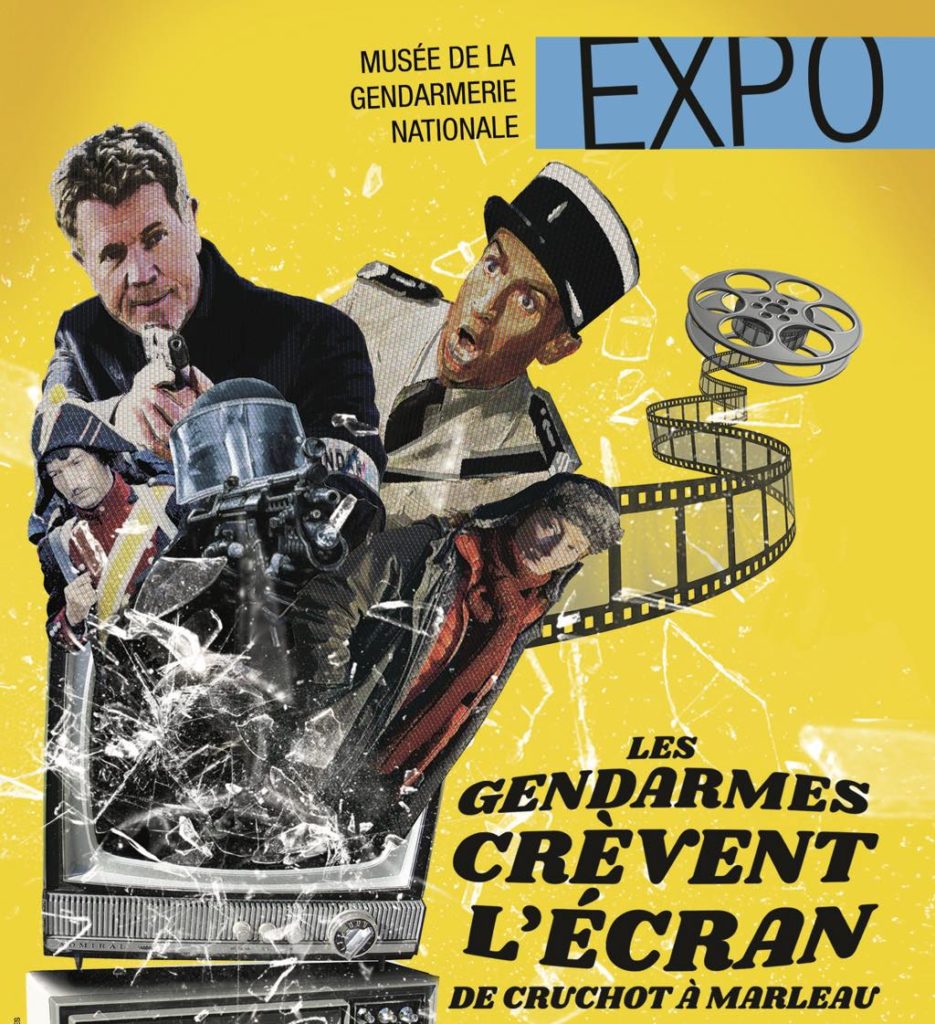
Melun is not the most beautiful town in France, but having spent New Year’s Eve there once, I can testify that it is home to some of the nicest people in the country. It is also home to the Musée de la Gendarmerie Nationale, housed in the headquarters of the French Gendarmerie Nationale, which, rather like a sheriff’s department in the United States, polices the rural and suburban areas of France, while the Police Nationale handles urban areas.
The museum’s permanent exhibition covers the history of the Gendarmerie Nationale from the time of the maréchaussées (marshalls), attached to the military during the Hundred Years’ War, to the present. It also holds temporary exhibitions like the current one, “Les Gendarmes Crèvent l’Écran,” an entertaining look at the depiction of these lawmen (lawpeople?) in French fiction films and TV shows from 1899 to the present.

In the early days of cinema, the French copper was mostly just a background figure, a caricature with a big mustache, képi or tricorn hat and provincial accent, chasing criminals, guarding prisoners or simply standing by to ensure the maintenance of law and order.

The fictional gendarme gradually took on a personality of his own, but not always a positive one. A series of films in the early ’60s starred comedian Louis de Funès as Sergeant Cruchot, a figure of fun like Peter Sellers’ character Inspector Clouseau in the Pink Panther series, an inspiration for the French films. Adhering to other clichés about France, the first Cruchot movie, Le Gendarme de Saint Tropez, prominently features a nudist colony.
The exhibition rather sniffily terms the Cruchot films “a good example of the nonrealistic representation of the gendarmerie.” They were a real shock to the gendarmerie’s sense of self-importance when they first came out. (Louis de Funès fans should note that the Cinémathèque Française is holding a retrospective of his career July 15, 2020-May 31, 2021.)

As police procedurals became increasingly popular, the depiction of gendarmes as experts in their field became more nuanced, and the characters became more three-dimensional in such films as Claude Bernard-Aubert’s L’Affaire Dominici (1973) with Jean Gabin, based on the true story of the murder of a British family in France.
The dark side of the gendarmerie was shown in films about police collaboration in the deportation of Jews during the Occupation of France by the Nazis in World War II. In the TV series “Un Village Français,” the local gendarme is confronted with difficult moral choices, while some films, like Monsieur Batignole (2001), directed by and starring Gérard Jugnot, depicted acts of resistance against the occupiers.

Sometimes the gendarmes are shown as brave heroes, like Jean-Paul Belmondo’s character in Henri Verneuil’s Peur sur la Ville (1975), starring the GIGN, France’s elite tactical unit, performing daring feats to save hostages.
Women finally got their turn in the real-life gendarmerie and on the screen in the 1980s. In one of the first films to feature female cops, Le Gendarme et les Gendarmettes (1982), another in the Louis de Funès series, the sexy lady cops caused quite a flurry among their male colleagues, but in the current TV series Capitaine Marleau, created by Elsa Marpeau, directed by Josée Dayan and starring Corinne Masiero, the “gendarmette” has come a long way and is now an eccentric, Columbo-like detective who wears a trademark fur hat with floppy earlaps, directly inspired by the one worn by Francis McDormand’s character in the Coen brothers’ 1996 film Fargo.

With its plethora of film clips and stills, theater sets, cardboard-cutout gendarmes and other props – including a crime scene complete with (fake) skeleton – the exhibition takes a lighthearted approach to its subject matter and is sure to amuse the kids. The more formal permanent exhibition upstairs will be of greater interest to history buffs. Don’t forget to arrive armed – with a mask.
Favorite